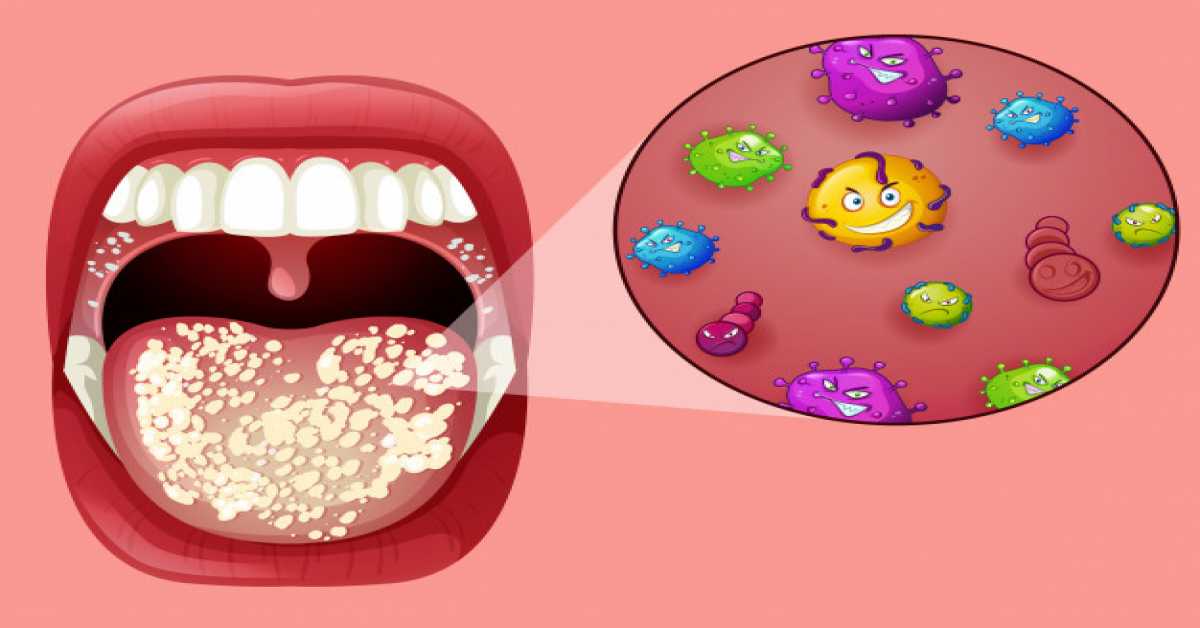Oral thrush occurs when a yeast infection develops on the inside of your mouth and on your tongue. This condition is also known as oral candidiasis, oropharyngeal candidiasis, or, simply, thrush
What is oral thrush?
Oral thrush occurs when a yeast infection develops on the inside of your mouth and on your tongue. This condition is also known as oral candidiasis, oropharyngeal candidiasis, or, simply, thrush.
The Candida albicans (C. albicans) fungus causes oral thrush. A small amount of this fungus normally lives in your mouth without causing harm. However, when the fungus begins to grow uncontrollably, an infection can develop in your mouth.
Oral thrush most often occurs in infants and toddlers. It causes white bumps to form on the inner cheeks and tongue. These growths usually go away once treatment is received.
Oral thrush is typically mild and rarely causes complications. However, the condition can be problematic for those with weakened immune systems.
What are the symptoms of oral thrush?
In its initial stages, oral thrush may not cause any symptoms. However, as time passes and the fungus continues to grow, the following symptoms may develop:
-
creamy white bumps on the tongue, inner cheeks, gums, or tonsils
-
slight bleeding when the bumps are scraped
-
pain at the site of the bumps
-
angular cheilitis, or dry, cracked skin at the corners of the mouth
-
difficulty swallowing
-
a bad taste in the mouth
In infants, oral thrush may occasionally cause:
-
difficulty feeding
-
fussiness
-
irritability
Babies with oral thrush can transmit it to their mothers during breastfeeding. Mothers and their infants can get caught in a cycle of transmission. If you’re breastfeeding and your breasts contract the fungus, you may experience:
-
intense itching, sensitivity, or pain in the nipples
flaking or shiny skin on the area surrounding the nipple
-
severe pain during breastfeeding
-
sharp, piercing pain in the breast
What causes oral thrush?
Oral thrush occurs when the C. albicans fungus begins to grow out of control. Normally, the immune system uses “good” microorganisms to keep C. albicans and other “bad” microorganisms under control. When this balance is disrupted, harmful bacteria and fungi begin to multiply. This leads an infection to develop.
Oral thrush can occur when your immune system is weakened by certain medications that reduce the number of good microorganisms that would naturally prevent infection. Cancer treatments, including chemotherapy and radiation, can also damage or kill healthy cells. This makes you more susceptible to oral thrush and other infections.
Diseases that attack your immune system, such as leukemia and HIV, also increase your risk for oral thrush.
Diabetes, another illness that affects your immune system, can contribute to oral thrush as well. If you have uncontrolled diabetes, you may have a high level of sugar in your saliva. One theory is that C. albicans can then use this extra sugar to fuel its growth in your mouth.
In newborns, oral thrush can be contracted at birth, though this is uncommon.
The same fungus that causes oral thrush also causes yeast infections, so pregnant women with a vaginal yeast infection can occasionally pass a yeast infection to their baby during delivery. Learn more about yeast infections during pregnancy.
Who’s at risk for oral thrush?
Babies and toddlers have the highest risk of developing oral thrush. However, it can also affect people who have a weakened immune system. You may have a weak immune system and be more at risk for oral thrush if you:
-
have diabetes, anemia, or HIV
-
have an illness that causes dry mouth
-
take antibiotics or corticosteroids
-
use chemotherapy, radiation, or drugs to treat cancer
-
wear dentures
-
smoke cigarettes
-
recently had an organ transplant, which increases the risk of fungal infection
How is oral thrush diagnosed?
Your doctor will probably be able to diagnose oral thrush simply by examining your mouth and tongue for the characteristic white bumps.
In some cases, your doctor may take a biopsy to confirm the diagnosis. A biopsy involves scraping off a very small portion of a bump in the mouth. The sample is then sent to a laboratory, where it’ll be tested for the presence of C. albicans.
If oral thrush is in your esophagus, your doctor likely will perform more procedures to ensure an accurate diagnosis. These can include a throat swab culture and an endoscopy.


